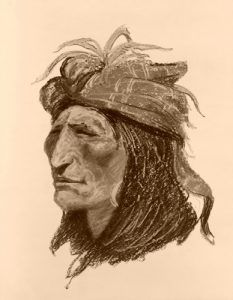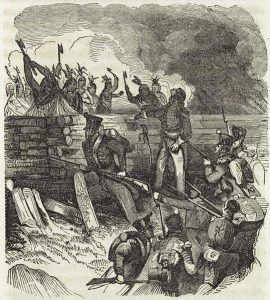The Creek War between 1813 and 1814 was also known as the Red Stick War and the Creek Civil War. It was a regional war between opposing Creek factions against European empires and the United States, mainly in Alabama and along the Gulf Coast.
Since the early 19th century, the Creek Indians of present-day Georgia and Alabama had been deeply troubled by the continuing encroachment of white settlers onto their lands. Though tribal leaders initially counseled neutrality and peace, this would change when Shawnee Chief Tecumseh visited the southern tribes, urging a confederation to end the encroachment on their lands and to maintain their way of life. He won many ardent supporters among the younger warriors, who joined with the northern Indians and the British.
The first of the Creek campaigns constituted an initial phase of the War of 1812, as raids were launched against white settlements. Later, the war reached crisis proportions when the Upper Creek and British soldiers sacked Fort Mims, Alabama, in August 1813, massacring more than 500 men, women, and children.
These same Indians, grown to a force of about 900 warriors, were decisively beaten at the Battle of Horseshoe Bend, Alabama, in late March 1814 by Andrew Jackson and his force of about 2,000 troops, plus several hundred friendly Indians. Eventually, most Creek Indians were sent to Indian Territory (Oklahoma) in 1832. Most of the remaining Creek who remained in the Southeast were also moved to Indian Territory in 1836-37 after participating in the Second Seminole War.
© Kathy Alexander/Legends of America, updated March 2024.
Also See:
Battles and Massacres of the Indian Wars


